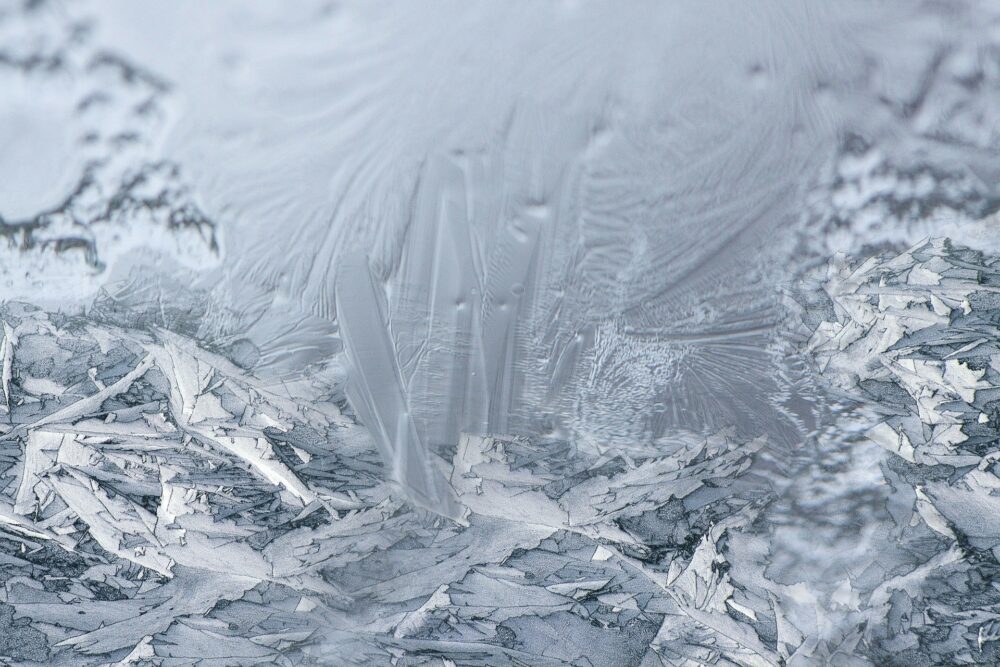There may already be time-travelers among us: people who elected to be frozen solid after their death to live once again in a scientifically updated future. It can certainly be argued that these individuals are quite literally in over their heads (in liquid nitrogen), but even though hardly anything is known about how exactly they will be revived to their full, pre-death mental and physical capacities, science has made some remarkable strides in that direction.
To put a pause on life is theoretically possible because of thermodynamics. All chemical reactions (millions of which are happening in a cell every second) slow down at cooler temperatures because there is less energy available to initiate them. At extremely low temperatures, biochemical processes arrive at a stand-still, effectively stopping aging and decay. Some species, like the Siberian salamander, can use this fact to their advantage and wait out a harsh winter by willingly letting their bodies cool down into a hibernative state. Hypothermic animals like humans, though, have some cells, like neurons, which are particularly oxygen-sensitive, and these cells cannot handle temperatures below 35 degrees Celsius. This is why the Siberian salamander will wake up healthy and refreshed from its cold nap, while you will get nerve damage, or die.
At extremely low temperatures, biochemical processes arrive at a stand-still, effectively stopping aging and decay.
In 1999, Swedish radiologist Anna Bågenholm was trapped under ice for an hour and 20 minutes. Her heart stopped for three hours and her body temperature lowered to 13.7 degrees Celsius. When she got to the hospital, her blood was gradually warmed up over the course of nine hours, and although she spent two months in intensive care after multiple organ systems failed, she survived with only some nerve damage to her hands. So although freezing a human body while it is still alive (putting it into cryosleep) is very dangerous, stopping and restarting it through temperature change is clearly possible somehow. This is the motivating force behind scientists who research cryonics — the study of preserving a human body after death in a very cold temperature in the hope that it can be brought back to full health and vitality in the future.
For anyone being cryogenically frozen, the moments after they are legally pronounced dead are critical. Their circulation and breathing are temporarily reinitiated to keep the brain cells alive long enough to take up protective medications, and then the body is cooled in an ice bath. Their blood is pumped out and replaced by an organ preservation solution to avoid blood clotting. After the body is transferred to an operating room at one of the world’s three cryonics organizations (Alcor in Arizona, Cryonics Institute in Michigan, or KrioRus in Russia), a cryoprotectant is “perfused” throughout the body via the blood vessels. Finally, the patient is cooled down to -196 degrees over the course of about a week and stored in liquid nitrogen in a vacuum-sealed cylindrical metal container called a dewar.
The reason why a body cannot be immediately frozen without the addition of special solutions is to prevent the formation of dangerous ice crystals.
The reason why a body cannot be immediately frozen without the addition of special solutions is to prevent the formation of dangerous ice crystals. When water freezes in the space between cells, salt and other dissolved chemicals fall out and accumulate. Due to the concentration gradient of salt across the cell membrane, water inside the cells exits to establish equilibrium through osmosis. All of this fluid coming out of the cell causes it to crumple and lose its structure. Cryoprotectants (biological antifreeze) are chemicals that dissolve in water and lower the temperature needed for it to freeze.
An updated version of cryoprotection, which is better at protecting cells and maintaining the structure of organs, is vitrification. Here, the body is perfused with a very high concentration of cryoprotectant and cooled very quickly, not giving water the chance to form crystals. Incredibly, in 2015, Robert McIntyre and Gregory Fahy successfully froze and unfroze rabbit and pig brains via vitrification, keeping the structure and organization of the neurons perfectly preserved. So we might be able to preserve the structure of the human brain and body through freezing, but whether or not it can be brought back to life with full functionality is an entirely different question — one we’ll leave for future us to figure out.
Regardless, the research going into cryopreservation certainly isn’t a waste of time. Even if we are only able to freeze and restore select tissues and organs, it will be a great success for the future of research and medicine. Meanwhile, it won’t hurt to hold out a little hope for our frozen time-travelers.
Sources:
Studies in History and Philosophy of Science Part C: Studies in History and Philosophy of Biological and Biomedical Sciences (2004). DOI: 10.1016/j.shpsc.2004.03.012
Cryobiology (2015). DOI: 10.1016/j.cryobiol.2015.09.003
Current Opinion in Organ Transplantation (2018). DOI: 10.1097/MOT.0000000000000534
